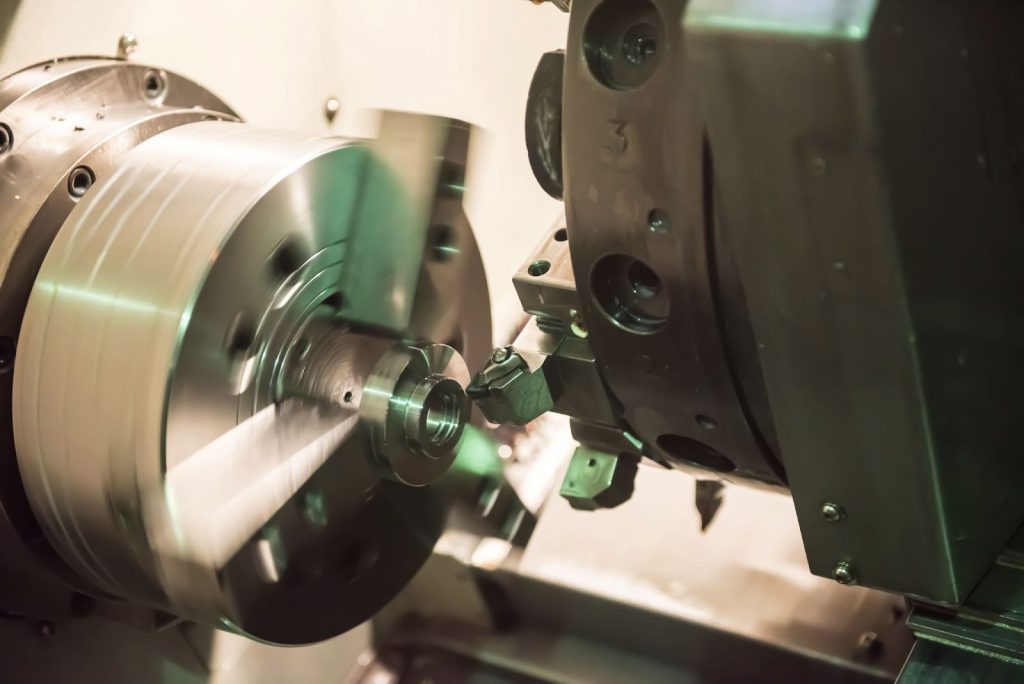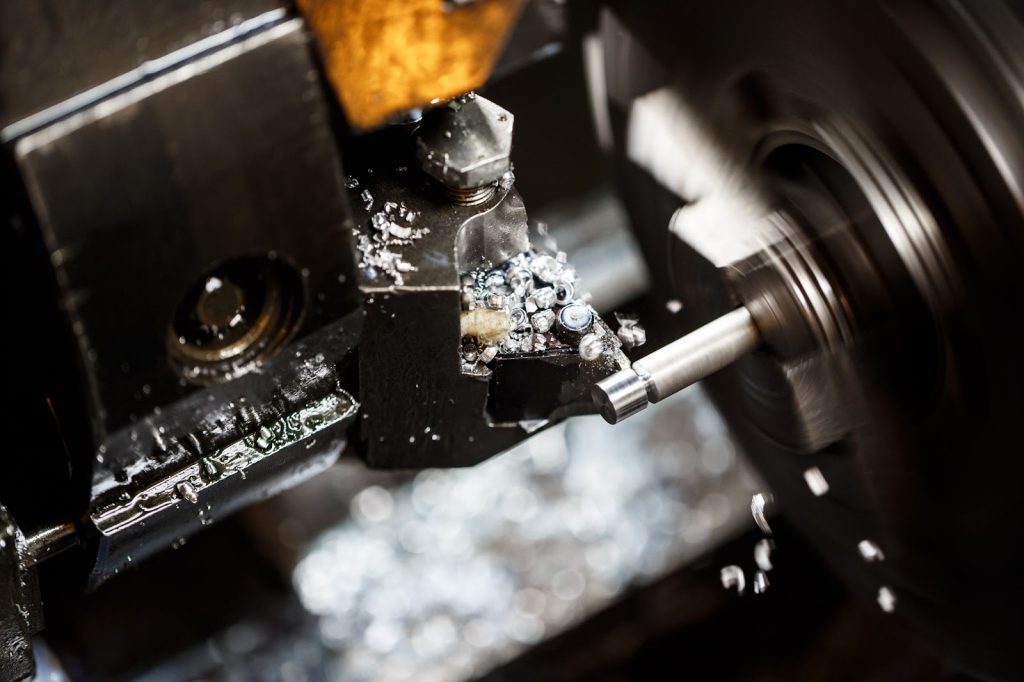6 Common Thread Machining Processes
Thread machining is a crucial step in many manufacturing operations, enabling the creation of threads that fit screws, bolts, and other fasteners precisely.
In brief, thread machining refers to a series of methods used to cut or form helical grooves into a material, which allows parts to be securely joined together.
Whether you’re producing high-volume components or specialized custom parts, understanding the right thread-making process is essential to achieving performance, durability, and efficiency.
This article explores 6 widely used methods in the thread machining landscape, helping manufacturers and engineers make informed decisions based on application, material, and volume needs.
We also examine how each method fits into the broader thread manufacturing process and highlight the role of service stamping and threading in high-volume production environments.

6 Widely Used Thread Machining Processes
1. Thread Cutting
Thread cutting is one of the oldest and most straightforward threading machining methods. It involves removing material to form threads using a lathe, tap, or die.
This method is ideal for precision applications where tolerance and surface finish matter.
When it’s used:
- Prototyping
- Low-volume production
- Machining hard materials
Benefits:
- Highly accurate threads
- Ideal for internal and external threads
- Applicable to a wide range of materials
Limitations:
- Slower than other thread-making processes
- Higher tool wear on tough metals
Thread cutting is still commonly used despite newer techniques, especially when dealing with unique geometries or highly specific custom parts.
2. Thread Rolling
Unlike thread cutting, thread rolling is a cold-forming process that displaces material to create threads rather than removing it.
Rollers compress the material to generate a hardened, work-strengthened thread profile.
When it’s used:
- High-volume production
- Parts requiring high strength and fatigue resistance
Benefits:
- Stronger threads due to work hardening
- Faster cycle times
No material waste
Limitations:
- Only suitable for ductile materials
- Limited thread profile flexibility
Thread rolling is a favored thread manufacturing process in the automotive and aerospace industries where strength and consistency are critical.
3. Thread Milling
Thread milling is a CNC-controlled method that uses a rotating tool to cut threads.
It’s particularly useful when dealing with large or custom thread sizes that would be difficult to produce with standard taps or dies.
When it’s used:
- Large-diameter threads
- High precision requirements
- Internal and external threads
Benefits:
- Superior control and accuracy
- Suitable for blind holes
- Reduced risk of tool breakage
Limitations:
- Requires CNC equipment
- Longer cycle time for small threads
Thread milling is growing in popularity due to its flexibility in custom applications and its compatibility with harder materials.
4. Tapping
Tapping is a widely used method for creating internal threads, using a tool called a tap. It is simple, fast, and commonly done on drill presses or CNC machines.
When it’s used:
- High-volume production of internal threads
- Low to medium strength applications
Benefits:
- Fast and efficient for internal threading
- Inexpensive tooling
- Compatible with many metals and plastics
Limitations:
- Taps can break easily, especially in tough materials
- Limited to smaller thread sizes
Tapping remains one of the most cost-effective and accessible methods in the thread-making process, especially for general-purpose internal threads.
5. Thread Grinding
Thread grinding is a high-precision process typically used for hardened materials and specialized components.
It removes material using a specially shaped grinding wheel, which is done on dedicated thread grinding machines.
When it’s used:
- High-precision or hardened materials
- Aerospace, medical, and high-end tool manufacturing
Benefits:
- Extremely accurate threads
- Excellent surface finish
- Suitable for tight tolerances
Limitations:
- Expensive equipment and tooling
- Slower than other methods
Thread grinding is an essential part of the threading machining toolbox for industries where even minor thread imperfections can cause major failures.
6. Service Stamping and Threading
Service stamping and threading often go hand in hand in large-scale production.
The stamping process forms the basic shape of the part, while integrated threading stations complete the threads, either by cutting or rolling.
When it’s used:
- Mass production of fasteners and fittings
- Cost-sensitive applications
Benefits:
- Streamlined production
- Reduced labor and handling time
- Lower cost per unit
Limitations:
- Less flexibility for complex designs
- High initial setup costs
Combining stamping with automated thread machining maximizes production efficiency and is commonly used by OEMs and high-volume pneumatic or hydraulic part manufacturers.

Choosing the Right Thread Machining Process
Not every method fits every application. When selecting a thread manufacturing process, factors like material type, production volume, thread size, and tolerances must be evaluated.
Below is a basic guide to help narrow down the best choice based on key variables:
| Method | Best For | Material Suitability | Volume |
| Thread Cutting | Prototypes, complex parts | All, including hard metals | Low to Medium |
| Thread Rolling | High-strength, fast production | Ductile metals | High |
| Thread Milling | Large/custom threads | All CNC-compatible materials | Low to Medium |
| Tapping | Internal threads, small parts | Metals, plastics | High |
| Thread Grinding | Hardened/high-precision applications | Hardened tool steels | Low |
| Service Stamping + Threading | Cost-effective mass production | Mild steel, brass, aluminum | Very High |
Supplementary Considerations
In addition to the machining process itself, thread-making success also relies on proper tooling, coolant use, and inspection methods.
Below are a few extra considerations that can impact quality and performance:
- Tooling life: Some methods, like thread grinding, wear tools slower but require costly, specialized equipment.
- Tolerances: Processes like thread cutting or grinding are preferred when tolerances are extremely tight.
- Thread types: Not all machining processes can produce all thread forms (UNF, metric, ACME, etc.).
- Surface finish: For certain applications, surface roughness may matter just as much as thread accuracy.
Modern manufacturing often integrates multiple steps in a single setup to improve efficiency.
For example, CNC machines can combine thread milling with other operations like drilling or slotting, reducing overall cycle time.
Threading operations may also benefit from automation, especially in facilities that offer full-service stamping and threading capabilities.
Final Thoughts: Thread Machining Processes
Thread machining plays a critical role in how fasteners and other threaded components perform under stress, vibration, and environmental conditions.
Whether you’re using thread cutting for a prototype or rolling threads on thousands of bolts per hour, choosing the right thread-making process is key to achieving strength, accuracy, and repeatability.
With advances in CNC technology, automated service stamping and threading, and specialized tooling, manufacturers today have more control and flexibility than ever.
Resources
CNRL Fasteners uses only high-quality sources, including peer-reviewed studies, to support the facts within our articles. Our commitment to accuracy and reliability ensures that readers receive well-researched information they can trust.